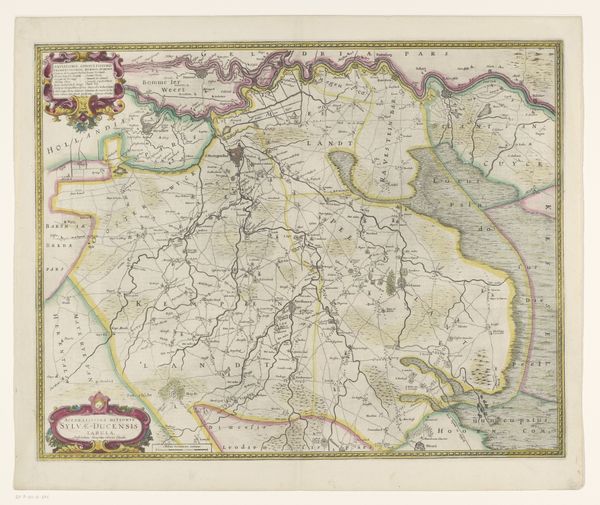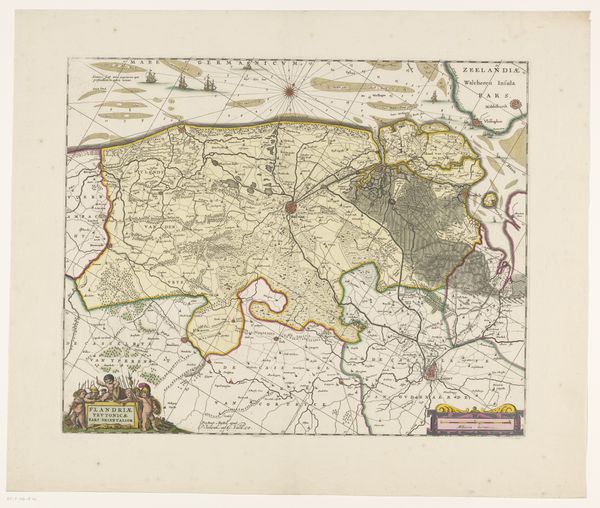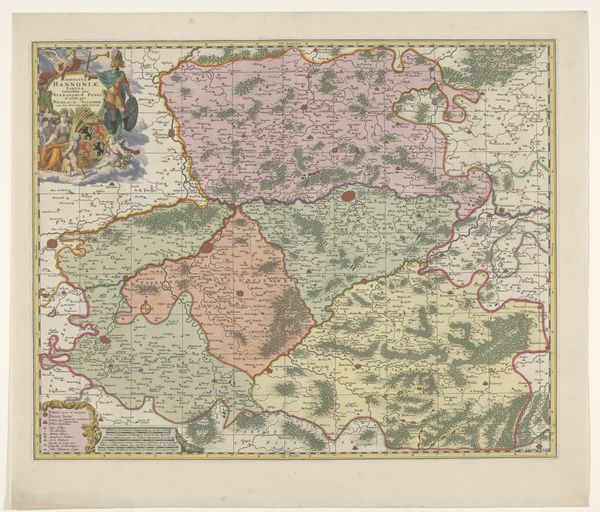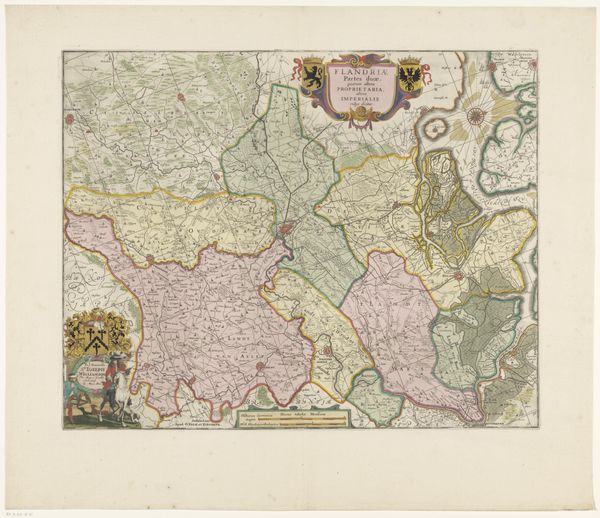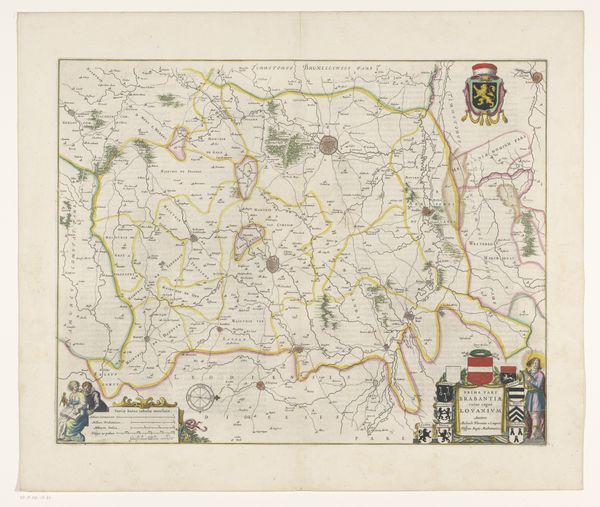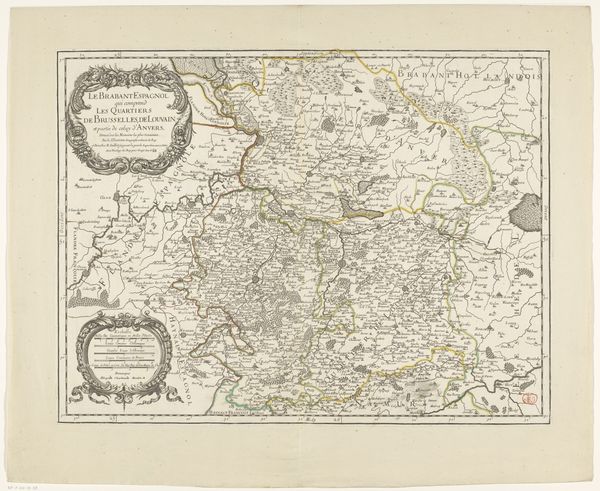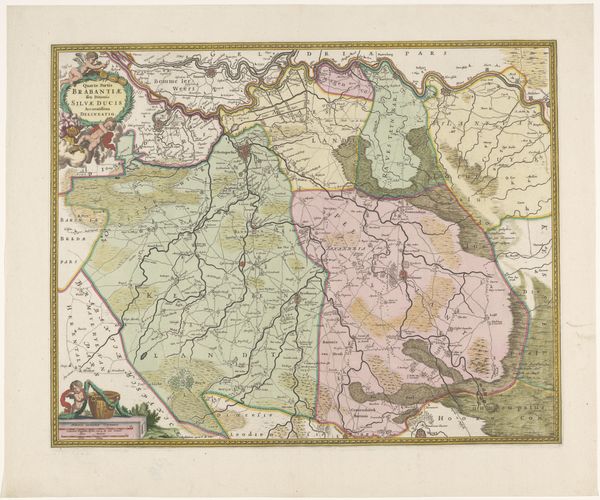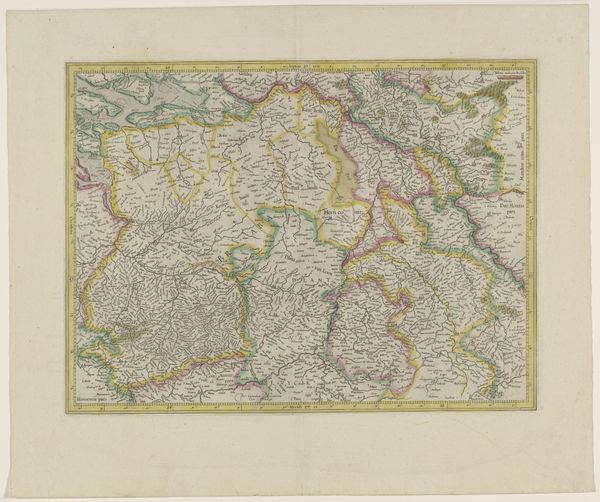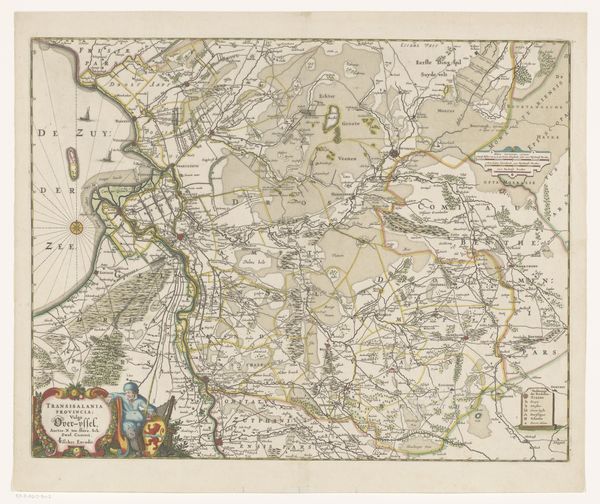
print, engraving
#
baroque
# print
#
cityscape
#
engraving
Dimensions: height 455 mm, width 534 mm
Copyright: Rijks Museum: Open Domain
Curator: Let's turn our attention to this baroque engraving held here at the Rijksmuseum, "Kaart van het prinsbisdom Luik," dating roughly between 1633 and 1711. It’s an anonymous work, presenting a detailed map of the Prince-Bishopric of Liège. Editor: My first impression is that it feels incredibly intricate, almost overwhelming. The density of information, the fine lines… It's as though the artist aimed to capture everything within this space. The coloration gives the artwork a measured, restrained look. Curator: Precisely! This map served not merely as a geographical tool but also as a statement of power. Notice the elaborate cartouche and the figures in the lower left corner—they signify authority and legitimacy in the socio-political context of the time. It projects power and the reach of influence. Editor: I'm struck by the use of line to define space. The way the engraver has rendered rivers and boundaries gives the impression of a unified territory. Even without color variation, there’s a very tangible delineation of the area's internal geography, from urban settlements to bodies of water. It shows structure. Curator: Yes, and considering the period, such detailed cartography played a vital role. Disputes over land ownership and territorial control were common. These maps were commissioned to assert rights and provide legal and administrative clarity. They are about control. Editor: You're right. It's about clarity but not without a sense of aesthetic flair. The font choices for place names contribute a great deal. Even if they're somewhat illegible to a contemporary eye, the variation adds texture to the design, giving it a character beyond pure utility. I find the integration fascinating. Curator: Understanding the production and purpose of these works offers insight into how states and rulers represented themselves. Mapping wasn't neutral. It was deeply involved in power dynamics and identity formation. It has strong meaning behind it. Editor: I find it impressive how much emotion is captured here, despite its ostensibly utilitarian role. I am pleased to view this with more knowledge now. Curator: Indeed. I feel equally informed through our different viewpoints. It’s an important artifact of its time.
Comments
No comments
Be the first to comment and join the conversation on the ultimate creative platform.

